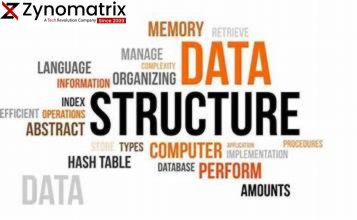Diving into Data Structures: A Comprehensive Guide
This blog post aims to provide a comprehensive understanding of data structures, starting from the basics and progressing towards more complex concepts. It covers essential topics such as arrays, linked lists, stacks, queues, trees, graphs, and hash tables. Each section explains the principles behind these structures, their implementation in various programming languages, and real-world use cases. Through clear explanations, code examples, and visual aids, readers will gain the necessary knowledge to comprehend, implement, and optimize data structures in their projects.

Introduction: In the realm of computer science and programming, data structures serve as the fundamental building blocks that empower efficient information storage, retrieval, and manipulation. Understanding these structures is pivotal for developers aiming to create robust and optimized algorithms and applications. This comprehensive guide aims to demystify data structures, providing a clear roadmap for enthusiasts, beginners, and seasoned programmers alike to delve deeper into this crucial aspect of coding.
Data structures are the cornerstone of efficient programming. They serve as the blueprint for organizing and managing data, enabling developers to create algorithms that perform optimally. In this guide, we'll embark on a journey through various data structures, exploring their significance, implementation, and practical applications in the world of software development.
Beginning with the fundamentals, we'll delve into arrays – the simplest yet crucial data structure used to store collections of items of the same type. From there, we'll progress to more complex structures like linked lists, which allow dynamic allocation of memory, offering flexibility in data management.
Our exploration doesn’t stop there; we'll unravel the mysteries behind stacks and queues, examining their unique characteristics and how they streamline data manipulation. Moving forward, we'll venture into trees and graphs, elucidating their role in representing hierarchical data and relationships between elements.
Hash tables, another essential data structure, will also find a place in our discussion. They enable quick data retrieval by using a hash function to map data to unique indices, facilitating rapid access to information. Each section will provide clear examples and practical scenarios to solidify understanding.
By the end of this guide, readers will possess a solid grasp of various data structures, their functionalities, and their respective advantages and trade-offs. Armed with this knowledge, developers can make informed decisions when selecting the appropriate structure for specific programming tasks, ultimately enhancing the efficiency and scalability of their code.
What's Your Reaction?





















